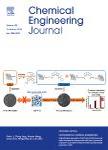版权所有:内蒙古大学图书馆 技术提供:维普资讯• 智图
内蒙古自治区呼和浩特市赛罕区大学西街235号 邮编: 010021

作者机构:State Key Laboratory of Analog and Mixed-Signal VLSI Institute of Microelectronics University of Macau China Faculty of Science and Technology University of Macau China Center of Reproduction Development & Aging and Institute of Translational Medicine Faculty of Health Sciences University of Macau Taipa China Shenzhen518107 China On leave from Instituto Superior Tecnico Universidade de Lisboa Lisboa Portugal MoE Frontiers Science Center for Precision Oncology University of Macau China
出 版 物:《Chemical Engineering Journal》 (Chem. Eng. J.)
年 卷 期:2025年第517卷
核心收录:
学科分类:0817[工学-化学工程与技术] 08[工学]
基 金:This work is supported by the Macau Science and Technology Development Fund (FDCT) [ FDCT 0029/2021/A1 , FDCT0168/2023/RIA3 , FDCT004/2023/SKL , FDCT0002/2021/AKP , and FDCT0071/2022/A2 ] University of Macau [ MYRG2023-00034-IME ] Dr. Stanley Ho Medical Development Foundation [ SHMDF-OIRFS/2024/001 ] The Ministry of Science & Technology of National Key Research and Development of China grant 2022YFA1105000 , National Science Foundation of China General Grant 32270842 . We also thank the technical and administrative team of the State-Key Laboratory of Analog and Mixed-Signal VLSI at the University of Macau for all their support. We thank the Animal Research Core and the Bioimaging and Stem Cell Core for their excellent services
主 题:Dermatitis
摘 要:Mesenchymal stem cells (MSCs) are widely used to treat inflammatory diseases and injuries, including wound healing, as they can immunomodulate and regenerate via paracrine mechanisms. MSC spheres, also known as mesenspheres, have even greater potential than dissociated MSCs in wound healing because they can survive under hypothermic and hypoxic conditions as cell spheres. However, the usage of mesenspheres in wound treatment faces significant challenges, such as low spherification efficiency, uneven distribution in the wound, incomplete release from the dressing, and limitations in multiple administrations. In this study, we developed a new type of dressing known as a mesensphere bandage (MSB) that addresses these challenges by integrating the generation of mesenspheres and wound application into a single solution. The MSB is made of a highly biocompatible material called polydimethylsiloxane (PDMS), which has thousands of patterned microwells that enable high-throughput mesensphere generation. The direct application of mesenspheres to the wound using the MSB ensures even distribution, complete delivery, and the possibility of multiple administrations. MSB has a shelf life of six days at room temperature, facilitating its clinical use. Our in vitro studies revealed that MSB enhances the secretion of factors that promote wound healing. In mouse model-based in vivo assays, MSB substantially accelerated wound healing efficacy by 33 % and enhanced skin remodeling by 58 % compared to those in the blank control group. We speculated that MSB may revolutionize MSC treatment for challenging skin wounds, such as diabetic foot ulcers and burns. © 2025 Elsevier B.V.